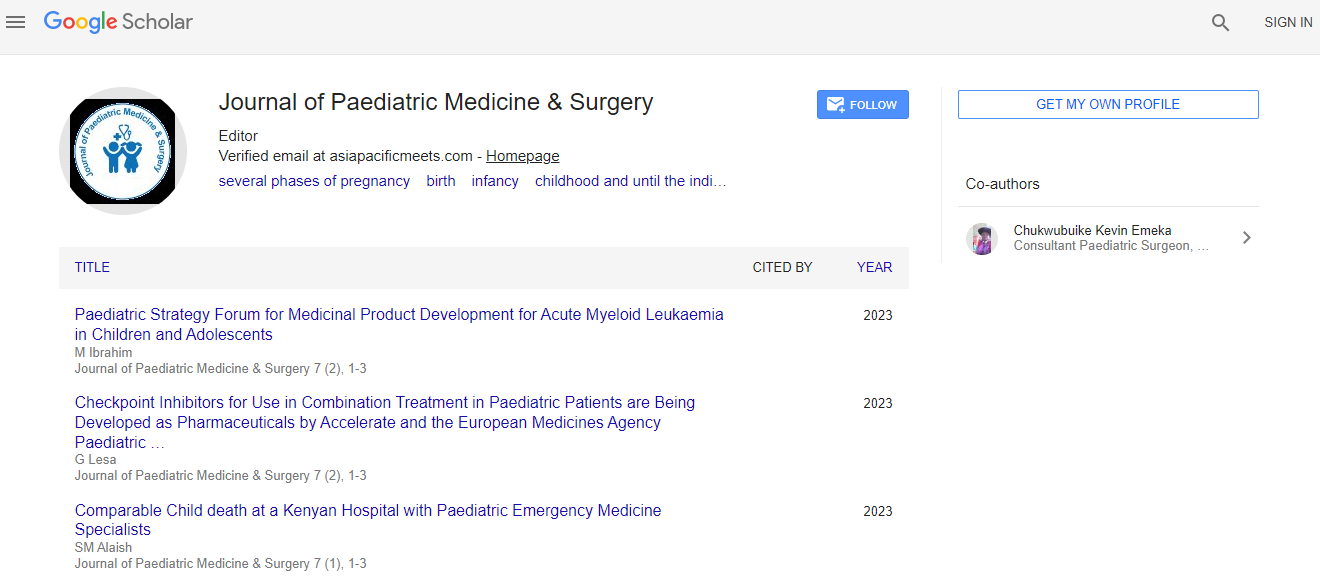Primary Care 2018: Acral rashes in an infant with Parechovirus meningitis - Dawn Lee - KK Womenâs and Childrenâs Hospital
*Corresponding Author:
Copyright: © 2018 . This is an open-access article distributed under the terms of the Creative Commons Attribution License, which permits unrestricted use, distribution, and reproduction in any medium, provided the original author and source are credited.
Abstract
Introduction: Human enteroviruses (EV) were initially characterized by their pathogenicity. The principal human enteroviruses (EV) found after poliovirus were the Coxsackie infections. They were named by the principal geological site of their separation in New York. A qualification was made between Coxsackie an infections, which were appeared to prompt flabby loss of motion and influence skeletal and heart muscle in mouse models, and Coxsackie B infections, which were appeared to incite spastic loss of motion and influence a wide scope of mouse tissues, including the focal sensory system, liver, exocrine pancreas, earthy colored fat, and striated muscle. The name Echovirus (enteric, cytopathogenic, human, vagrant infection) was then picked for the infections. Afterward, it was discovered that singular Echovirus serotypes are related with a wide assortment of clinical appearances, as gastro-enteritis, meningitis and respiratory sickness. With the revelation of new EV types, it turned out to be progressively hard to order them dependent on explicit clinical indications as serotypes with just a couple of sub-atomic contrasts had an alternate viral phenotype prompting profoundly assorted manifestations. Consequently, since 1974, new EVs with various serological properties have been numbered by their request for ID. All the more as of late, because of sub-atomic composing, the order of EVs has been adjusted and overhauled. Besides, two serologically unmistakable infections, found in 1956 throughout a midyear loose bowels episode in American kids, were initially portrayed as Echovirus 22 and 23 inside the human EVs as a result of their clinical and morphological properties. Be that as it may, they were demonstrated to be unmistakable from EVs and different picornavirus bunches in a few highlights of their genome association, structure, and replication and were renamed and renamed into their own variety, Parechovirus.
Human parechovirus (HPeV) contaminations are related with a range of manifestations running from gentle and self-constraining gastroenteritis to extreme fundamental malady influencing, for the most part, children.1,2 To date, 16 subtypes of HPeV have been depicted. In pediatric patients, HPeV-1 and HPeV-2 reason principally mellow gastrointestinal and respiratory malady with great short-and long haul outcomes.2,3 HPeV-3 can inspire extreme fundamental ailment including sepsis and focal sensory system contamination, especially in youthful infants.2,3 Short-term results after HPeV-3 meningoencephalitis are portrayed as consoling. Be that as it may, little is thought about long haul development and a few reports show HPeV-3 as a potential reason for antagonistic neurodevelopmental result.
Human parechovirus diseases for the most part cause mellow manifestations in kids. Despite the fact that their commitment to serious infection in small kids, for example, neonatal sepsis and meningoencephalitis—is progressively perceived, information on long haul results are scant.
Abstract: A 2-month-old young lady gave fever and peevishness. She was brought into the world full term with no other clinical issues. Her imperative signs were steady. Other than a summed up maculopapular exanthema, physical assessment was typical. On day three of fever, she created non-delicate palmoplantar erythema (Figure 1 and 2). Guardians declined organization of intravenous anti-microbials. The white cell check was 4.33×10^9/L (5-15×10^9/L; 42% neutrophils, 36% lymphocytes, 21% monocytes). Hemoglobin level and platelet check were typical. C-responsive protein and procalcitonin levels were unremarkable. Full septic workup didn't yield development of any life form. Cerebrospinal liquid (CSF) indicated no pleocytosis, with ordinary protein and glucose levels. Ongoing PCR examination of CSF distinguished parechovirus RNA (the serotype was not dissected for this situation). Fever died down in this way and she was released following three days. Differential analyses of an acral rash incorporate Kawasaki malady (KD), contact dermatitis, and hot hand-foot disorder brought about by Pseudomonas aeruginosa and parvovirus contamination. What's more, newborn children with enterovirus contaminations (hand-foot-mouth sickness) can likewise give comparable rashes on the palms or bottoms. She had no other clinical blemish of KD and the blood fiery markers were not fundamentally raised. Contact dermatitis presents with vesicular, tearful, crusted eczematous plaques rather and is less regularly found in her age gathering. Additionally, she had no history of contact allergen or topical operators concerned her palms going before the rash. Hot hand-foot condition presents with red and delicate palmoplantar knobs after introduction to Pseudomonas aeruginosa in warm pools with low pH and low chlorine levels. Papular-purpuric gloves and socks condition, as a rule found in parvovirus B19 contamination, presents with erythematous and purpuric papules on dorsal, palmar and plantar surfaces of distal furthest points. This baby had parechovirus meningitis with palmoplantar erythema and a vague maculopapular rash, the two of which were recently depicted. Palmoplantar erythema in a febrile newborn child is remarkable and can be a demonstrative sign for parechovirus disease. In presumed meningoencephalitis cases, CSF ought to be sent for parechovirus testing in spite of ordinary CSF microscopy as most of babies with parechovirus meningitis had no CSF pleocytosis. In the event that realtime PCR investigation of CSF identified parechovirus RNA, it would likewise be helpful to break down the serotype of parechovirus included. As parechovirus can give a sepsis-like disorder and encephalitis in neonates and newborn children, perceiving its dermatologic appearances can be useful to smooth out examinations and maintain a strategic distance from pointless skin biopsies. Paraviral palmoplantar erythema was self-constraining for this situation and didn't require explicit treatment. This perception can possibly be added to the rundown of lesser known parainfectious exanthems.

 Spanish
Spanish  Chinese
Chinese  Russian
Russian  German
German  French
French  Japanese
Japanese  Portuguese
Portuguese  Hindi
Hindi 